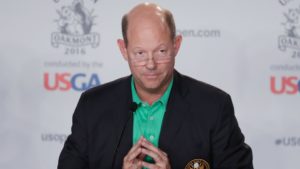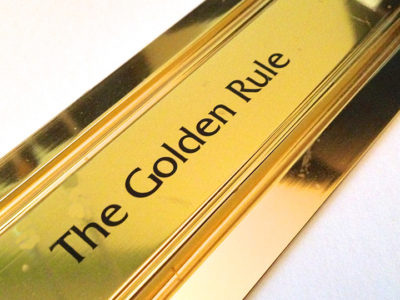By Ed Travis
Michael Whan recently announced he would resign as Commissioner of the LPGA Tour and last month it was announced he would replace Mike Davis as CEO of the United States Golf Association (USGA) in 2022.
The USGA is facing issues that will affect the game for years to come. This change is seen as an opportunity for the betterment of golf at every level. 
Whan’s resignation from the LPGA Tour ended the longest and most successful tenure of any commissioner in the Tour’s 70-year history. In 20210, under previous LPGA Commissioner, Carolyn Bivens, the ladies tour schedule was down to just 24 events. Prize money had shrunk and relationships, with players and sponsors alike, were tense.
Whan leaves the LPGA in much better shape than when he arrived. The 2021 schedule includes 34 events and prize money has increased by over 80 percent to a whopping $76 million.
The USGA’s relationship with the average golfer is at a crossroads. Many believe the ruling body has lost touch with the golfing public. The USGA’s attempt to modernize the Rules of Golf, has been received with mixed reviews. One significant barometer of the recreational player’s attitude of the USGA is negative. Only 2.3 million golfers have registered for the new Golf Handicap Information Network (GHIN), which is less than 10 percent of the approximately 24.3 million U.S. players that have a USGA handicap.
The game’s elite, those on the PGA Tour, have been critical of the USGA in several areas. To improve relations between the tour and the USGA, former tour player Jason Gore, was hired as a liaison. The hot issues remain, however. Concerns linger about how the U.S. Open is conducted, rules changes and interpretations, plus the 600-pound gorilla in the room, equipment and distance regulations.
 The USGA has taken the position that golf professionals hit the ball too far, thus making older courses obsolete. In an effort to maintain scoring at historical levels many top-level venues require lengthening to keep pace. The USGA, in conjunction with The R&A, commissioned a Distance Insights Project to study the distance issue, undoubtedly with the intent to restrict drivers and limit golf ball performance. Also not a favorite topic of golf equipment manufacturers.
The USGA has taken the position that golf professionals hit the ball too far, thus making older courses obsolete. In an effort to maintain scoring at historical levels many top-level venues require lengthening to keep pace. The USGA, in conjunction with The R&A, commissioned a Distance Insights Project to study the distance issue, undoubtedly with the intent to restrict drivers and limit golf ball performance. Also not a favorite topic of golf equipment manufacturers.
Though the final report has yet to be issued, there is little doubt of the outcome as the current CEO Davis has gone on record saying that before his term of office was over, he would see the ball rolled back.
This seems to be the basic issue between average golfers and the USGA. The golf industry seems to be faced with the certainty that either the golf ball, or golf clubs, or possibly both, must have overall performance curtailed. However, that opinion does not seem to necessarily reflect the feeling of average golfers.
Put another way, no one has ever left the game because they hit the ball too far, or it had become too easy. The USGA has not put proper emphasis on the most important topic of the discussion,
What do golf fans, who pay greens fees, buy annual club memberships, spend millions annually on golf equipment and support the PGA Tour think?
Fans are excited by pros hitting the long ball and making birdies in bunches. That simple fact seems to have been forgotten, As any successful businessperson can tell you, it is always a mistake to ignore customers.
Paraphrasing world renown instructor Hank Haney, ‘people don’t go to a ball game to see a bunch of bunt singles.’
Whan is an experienced negotiator and ran the LPGA with the fan experience foremost in mind. He has the opportunity to use his proven skills to bring a fresh, market-oriented customer-friendly perspective to the USGA and not simply rubber stamp the present view of traditionalists.
The idea of restricting drivers, or golf balls because a few talented athletes can make their tee shots go 300 yards must be rethought and making a separate set of Rules for regular players is not in the spirit of the game.
The USGA is a traditionalistic monolith. Michael Whan is facing a huge task, not just with golf fans, but inside the USGA bureaucracy, as well. His primary task will be to soothe egos and garner a consensus within the USGA, as well as, among average golfers.
The relevancy of the golf’s leading association in America is at stake and for the good of the game, hopefully he can lead them kicking and screaming into the 21st century.










